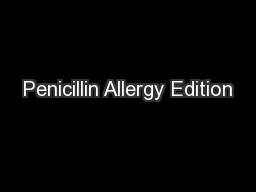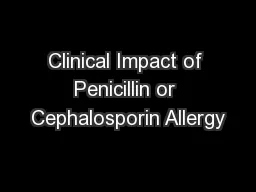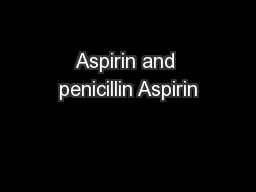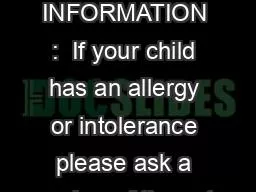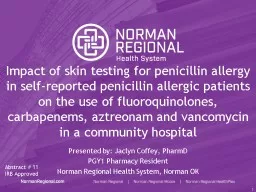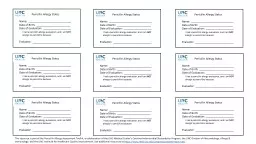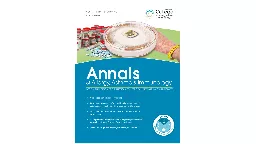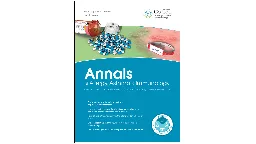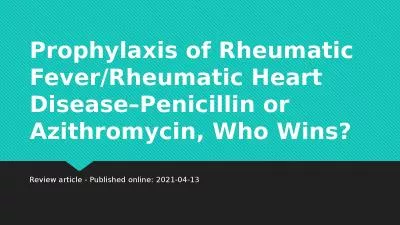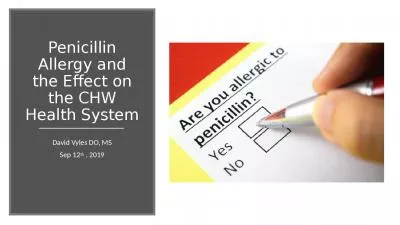PPT-Penicillin Allergy Edition
Author : natalia-silvester | Published Date : 2018-10-22
Mary L Staicu PharmD Infectious Diseases Clinical Pharmacy Specialist Rochester General Hospital Statement of Disclosures No financial disclosures Objectives Case
Presentation Embed Code
Download Presentation
Download Presentation The PPT/PDF document "Penicillin Allergy Edition" is the property of its rightful owner. Permission is granted to download and print the materials on this website for personal, non-commercial use only, and to display it on your personal computer provided you do not modify the materials and that you retain all copyright notices contained in the materials. By downloading content from our website, you accept the terms of this agreement.
Penicillin Allergy Edition: Transcript
Download Rules Of Document
"Penicillin Allergy Edition"The content belongs to its owner. You may download and print it for personal use, without modification, and keep all copyright notices. By downloading, you agree to these terms.
Related Documents

